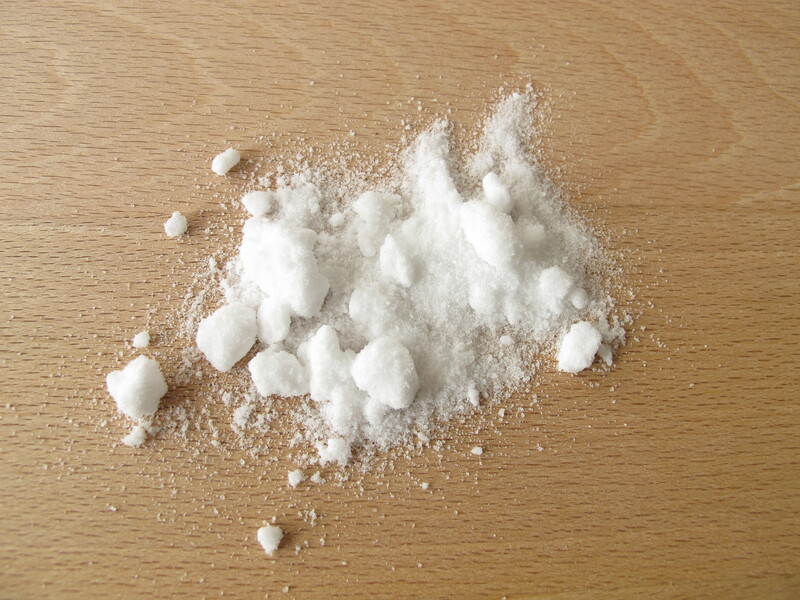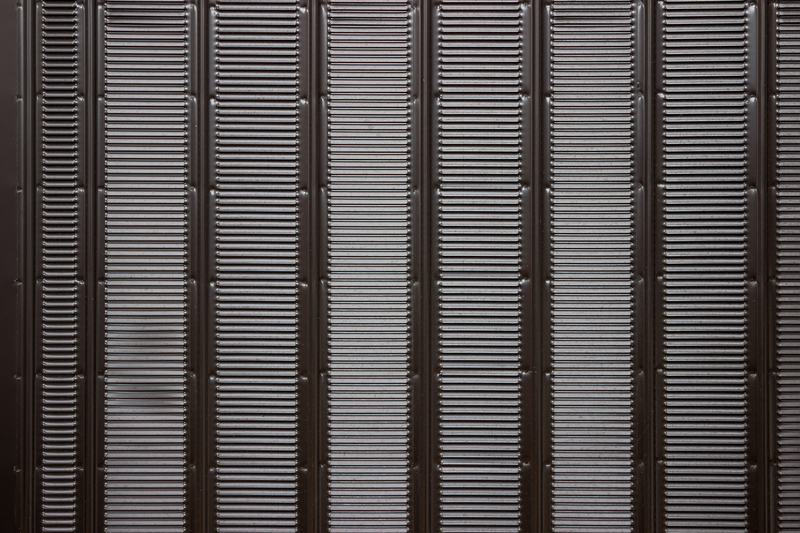Advanced Techniques for Cleaning Curtains Properly
Posted on 18/08/2025
Advanced Techniques for Cleaning Curtains Properly
Maintaining clean curtains can dramatically enhance a room's appearance, air quality, and longevity of your window treatments. While basic dusting and occasional machine washing do the job for many, truly cleaning curtains properly requires a deeper understanding of advanced methods tailored to the variety of curtain styles, fabrics, and special care needs. In this comprehensive guide, we'll uncover expert tips and advanced cleaning techniques to help ensure your drapes always look impeccable and last longer.

Understanding Your Curtains: Fabric and Construction Matter
Before diving into advanced curtain cleaning techniques, it's crucial to recognize that curtain material dramatically influences the cleaning process. From thick velvet to airy sheers, each fabric demands unique care. Here are common types and their general cleaning needs:
- Cotton Curtains: Durable and often machine-washable, but may shrink if not handled properly.
- Linen Curtains: Require gentle washing and minimal wringing to avoid wrinkles and weakening of fibers.
- Silk Curtains: Delicate and typically necessitate dry cleaning or gentle handwashing with mild detergents.
- Velvet Curtains: Best maintained with professional dry cleaning or gentle vacuuming due to their plush texture.
- Synthetic Materials (polyester, nylon): Generally hardy but sensitive to high heat; most are machine-washable.
- Blackout and Thermal Curtains: Often have a rubber or foam backing--moisture and harsh chemicals can damage these.
Always consult the manufacturer's care label before applying any advanced cleaning technique to ensure fabric integrity and colorfastness.
Preparation: Pre-Cleaning Steps for Effective Results
Remove Dust and Debris Regularly
Consistent dust removal not only adds to your curtain's appeal but also makes comprehensive cleaning less daunting. Here are advanced methods to tackle dust efficiently:
- Vacuuming with Upholstery Attachments: Use the soft brush attachment to carefully vacuum curtains top-to-bottom. For pleated or heavy drapes, consider a handheld vacuum for better control.
- Shaking or Beating Outdoors: On a clear, dry day, take curtains outside and gently shake or beat using a soft mallet.
- Lint Rollers: For delicate or textured fabrics, a large lint roller can efficiently lift surface dust without snagging threads.
Tackle Stubborn Spots Before Washing
Spot cleaning is essential in advanced care. Address stains or marks using these methods:
- Mild Detergent Solution: Mix a few drops of mild, fragrance-free liquid detergent with water. Apply gently to the stain using a clean cloth, blot (don't rub) until the spot fades.
- Vinegar Solution: For organic stains, a mix of white vinegar and water (1:3 ratio) can be applied, especially effective for odors or mold.
- Professional Spot-Treatment Sprays: When in doubt, use fabric-safe commercial cleaners, but always patch-test in an inconspicuous area first.
- Tip: Never overwet patches as moisture may spread stains and damage certain materials.
Washing Curtains Properly: Machine, Hand, and Professional Methods
Machine Washing
Many modern curtains are designed for machine laundering, but maximizing results and minimizing damage requires advanced techniques:
- Use Gentle Cycles: Opt for the delicate or hand-wash setting, especially for lightweight or mixed-fabric curtains.
- Cold Water Only: Prevent shrinkage and fading by using cold water exclusively.
- Mesh Laundry Bags: Place curtains in extra-large mesh laundry bags to prevent tangling and snagging.
- Mild Detergent: Choose fragrance-free, low-sudsing formulas made for sensitive fabrics.
- Don't Overload: Wash curtains by themselves or with a couple of towels to cushion drum agitation.
Hand Washing Delicate Curtains
For lace, silk, or embellished curtains, hand-washing is safest. Here's how to do it properly:
- Fill a Tub: Use a clean bathtub or large basin with lukewarm water.
- Dissolve Detergent First: Before adding curtains, mix in the detergent thoroughly to avoid concentrated spots.
- Soak and Gently Agitate: Allow curtains to soak for ten minutes, then agitate with your hands to release dirt.
- Rinse Thoroughly: Rinse in several changes of cool water to remove all soap.
- Press, Don't Wring: Gently press out water from fabric instead of twisting, which causes stretching or wrinkling.
Professional Cleaning for Valuable Curtains
Certain curtain fabrics and finishes--including silk, velvet, heavy brocade, or those with intricate trims--demand professional dry cleaning. Seek out cleaners experienced with window treatments and always mention any special attachments, linings, or accessories.
Advanced Steam Cleaning for Curtains
Steam cleaning is an effective, chemical-free way to deep clean with minimal water contact. Here's how to master the process:
- Invest in a Quality Garment Steamer: These generate a steady stream of steam ideal for hanging curtains.
- Start from the Top: With curtains hanging, steam from top to bottom, holding the steamer at least six inches away to avoid wetting or scalding the fabric.
- Use Gentle, Downward Motions: This removes odors, relieves wrinkles, and kills dust mites.
- Allow for Drying and Airflow: Open windows and use fans to speed up drying and prevent mildew.
Note: While steam cleaning is safe for most synthetic and cotton curtains, avoid on silk or materials with glued embellishments.
Special Techniques: Blackout, Thermal & Sheer Curtain Care
Blackout and Thermal Curtains
Cleaning blackout curtains involves extra caution due to their rubberized or foam backings that can degrade with excessive moisture or agitation. Use these advanced steps:
- Spot Clean Only: Wipe with a damp cloth and mild soap. Avoid soaking or scrubbing the backing.
- Vacuum, Don't Machine Wash: Use a vacuum cleaner with a soft brush on both fabric and backing sides.
- Air Out Regularly: Prevent odors and mildew by hanging curtains in a well-ventilated space every few months.
-
Test in Small Area: Before any new cleaning agent, always trial on a less-visible patch.
Sheer and Voile Curtains
These translucent, lightweight fabrics are prone to snags and stretching. Follow these tips for cleaning voile curtains properly:
- Use Pillowcases: Place sheers in a clean white pillowcase before machine washing to guard against snags.
- Gentle Detergent Only: Rinse with plenty of cold water to remove all soap.
- Air Dry Flat: Never tumble dry--reshape and lay flat on towels to prevent stretching.
- Iron on Low: If needed, iron while slightly damp to remove wrinkles.
Odor and Mildew Removal: Odorless, Fresh Curtains Every Time
Advanced curtain cleaning goes beyond visible stains by removing unwanted odors and mildew. Here are powerful odor-removal tactics:
- Baking Soda Sprinkle: For removable curtains, sprinkle with baking soda, let sit for an hour, then shake or vacuum off.
- White Vinegar Steam: Add a splash of white vinegar to your steamer's water tank (check for compatibility) for natural deodorizing.
- Sunlight: Hang clean curtains outside on a sunny day--the UV rays naturally kill bacteria and freshen fabric.
- Enzyme-Based Cleaners: For mildew, use a gentle enzyme cleaner approved for fabric. Always spot test and ensure thorough rinsing.
Drying and Rehanging: The Final Steps to Proper Curtain Care
Proper Drying Techniques
- Never Overdry: Excessive heat from dryers can shrink or damage curtain fibers.
- Shake and Rehang While Damp: For most heavy curtains, shaking out wrinkles and rehanging while very slightly damp allows them to naturally drop back into place.
- Flat Drying for Delicates: Lay lace, silk, and sheers on flat towels to keep their shape.
- Direct Sunlight Caution: Prolonged UV exposure can fade colors--limit sun-drying for colored or printed curtains.
Pressing for a Flawless Finish
After drying, use a cool iron or steamer to gently remove wrinkles. Always check fabric type and use a pressing cloth for delicate materials. For pleated curtains, pin or clip pleats while ironing for sharp, professional lines.

Preventative Care: Keep Curtains Cleaner, Longer
To minimize advanced cleaning frequency and maximize curtain lifespan:
- Vacuum Weekly: Prevents dust buildup and allergic triggers.
- Rotate Curtains: If direct sun exposure is inevitable, rotate panels to ensure even wear and color retention.
- Limit Window Condensation: Use dehumidifiers or regularly wipe sills to reduce the risk of mold and mildew.
- Maintain Clean Windows: Dirty glass can quickly transfer grime to adjacent curtains.
Conclusion: Mastering the Art of Advanced Curtain Cleaning
Cleaning curtains properly goes far beyond occasional washing or simple dusting. By identifying your curtain fabric, pre-treating stains, using advanced machine-, hand-, and steam-cleaning techniques, and following specialized care for blackout, thermal, or sheer curtains, you can keep your window treatments looking and smelling their best for years.
Don't overlook the importance of careful drying, pressing, and preventative maintenance. With these advanced techniques at your disposal, you'll ensure your curtains are always a source of pride, beauty, and lasting durability in your home.
Want more tips on how to clean curtains properly? Bookmark this guide for regular reference and share it with other homeowners looking for best-in-class curtain care.



